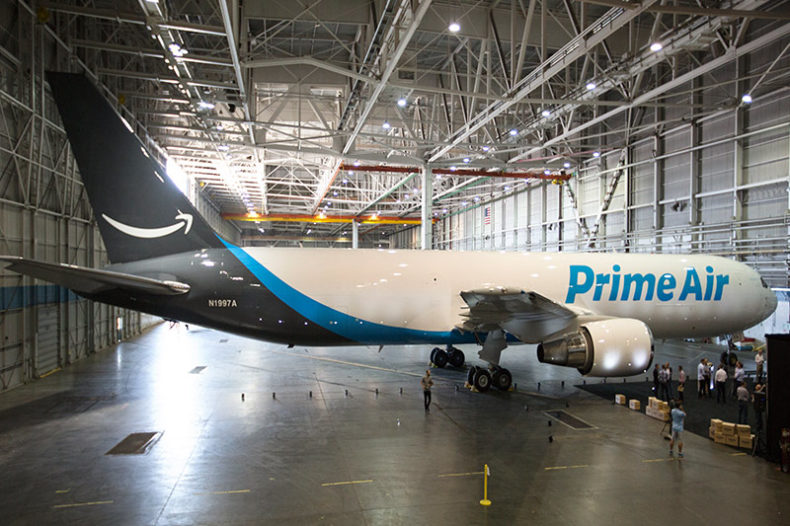by Dick Metzler, Chief Marketing Officer, uShip / One in a series of periodic guest columns by industry thought leaders. /
If you have ever purchased something on eBay, hailed a ride from Uber or vacationed in Airbnb lodging, you’ve participated in the sharing economy. The commonality with these on-demand companies is that customers transact online or through an app, but the service itself is fulfilled offline. A growing number of on-demand delivery start-ups —Instacart, Postmates and many more — have logistics at the heart of their value proposition. You want that meal, chinos or bottle of Smirnoff now? It’ll be in your hands in an hour. This pledge for instant gratification is leaving many in the shipping and logistics industry asking, “Will the sharing economy and this recent need for speed disrupt traditional transportation and logistics as we know it?”
The answer lies in how on-demand, two-hour delivery stacks up to time-tested logistics models that are the cornerstone of the biggest global companies: FedEx, UPS, DHL and others. In an era of instant gratification, old-school logistics are still what bring the bottom line — and on-demand start-ups would be wise to heed their experience. In other words, Internet/app economics and logistics economics are at odds with each other. And I’ve got $100 of my own money — and over 30 years of experience to back up my bet — that I know which system is going to come out on top.
How did we get here?
Every single industry is churning out the Uber of X, attempting to emulate the ride-sharing company’s success. These new businesses include Instacart’s groceries services, Luxe’s on-demand parking and valet, BloomThat’s flower delivery and the now-defunct HomeJoy’s maid services. Caught up in the wave, as well as a fear of missing out on the next Uber, venture capital firms last year pumped more than $17 billion into 214 companies that have some kind of on-demand delivery component. The logistics industry alone garnered more than 13 percent of all VC investments, with a disproportionate going to Uber. In fact, a significant portion of investment has gone into companies big and small that claim to be the “Uber of freight” — attempting to instantly match loads with trucks through the use of apps.
But after a giant — and irrational — influx of investment “exUberance” into physical delivery and logistics companies, the bloom is off the rose. This is making B-round investments extremely tough to come by for all but a few that remain in the game by adapting their methods to what consumers really want.
‘Uber of freight’
When it comes to logistics, in my estimation there are two companies that have the best chance to win in the need-to-have-it-now position: Uber and Amazon. Uber has empowered people with both speed and mobility, creating an expectation that within minutes, from the palm of your hand, you should have access to a car to take you to darn near anywhere for far less than a crusty old cab. Uber has even recently modified its tagline to: “Where lifestyle meets logistics.” In other words, it might very well add delivery of anything that will fit in a car with UberRUSH or UberEVERYTHING.
And it may go much larger. Just last week, Uber acquired self-driving truck developer Otto. The companies also announced they were developing a digital service that will match loads to truckers.
Meanwhile, Amazon has brilliantly propagated speed in the form of second-day or next-day free delivery through Amazon Prime. This is now quickly giving way to two-hour or even one-hour delivery as more Amazon distribution centers dot the map. Eventually, there could be more Amazon fulfillment centers than 7-Eleven convenience stores. This new expectation standard has created a system whereby smaller entities without deep pockets and infrastructure simply can’t compete.
But here’s the rub: Do consumers even want on-demand, two-hour delivery?
A recent study from the Internet Retailer found that free service is twice as influential as same-day shipping. In fact, a vast majority — 94 percent — would wait between two and seven days for free shipping. Even when paying for shipping, only 1.3 percent expected same-day shipping, while 13.5 percent expected it next day.
Disrupting on-demand
Despite these numbers that clearly reflect consumer preference, many a start-up has met its end trying to deliver on an Amazon-like same-day promise. Why is this? In the world of delivery, only two models work: “route density” (think FedEx, UPS and the U.S. Postal Service) and “high revenue per stop” (think white-glove delivery or those types of large shipments facilitated by companies such as mine, uShip). Most of the on-demand start-ups have neither. That will inevitably lead to a short and miserable life for them and their VC sponsors. This may continue for some period of time nonetheless, but no VC money can prop up those models in the long term. Recently, cracks have emerged in companies that haven’t figured that out, and this is a large reason why so many same-day deliver start-ups fail.
In logistics terms, this is a simple geography issue regarding physics and cost. With one-hour deliveries, there isn’t an overarching, streamlined process in place. There is no route density, and the items are typically low value, like clothing or a computer charger. Mostly, a driver zig-zags from current location to store to delivery location, racking up high costs per stop, wasting time, gas and money, ultimately delivering that pair of chinos to a buyer’s home for $5 when scalable operational costs were probably three to four times that. It simply won’t work.
So, how will it work? Surviving will require retooling an approach. Take BloomThat, for example. This flower-delivery start-up worked under the impression that people wanted bouquets and arrangements on-demand, and quickly found itself collapsing under the weight of its delivery and logistics costs. Instead of dying on the vine, BloomThat revised its services to offer next-day or later service, reducing costs by 25 percent while achieving the route density they needed to sustain a viable business model. It turns out that end-of-day or next-day flower delivery suited its customers’ demand just fine.
When the dust settles
I’m not going to sit here and claim I’ve a crystal ball, but here are my predictions about where we’ll find ourselves when the dust settles, including the winners and losers in on-demand delivery in the sharing economy:
- Amazon Effect: Based on Amazon’s efficiency, buyers have come to expect one- or two-hour services via Prime and can’t live without it. This presupposes that the USPS will survive in its current form and Amazon Flex can backfill, neither of which is a slam dunk. Having said that, I think FedEx and UPS should establish a bright red line and plan for when Amazon becomes more of a competitor than a customer. Right now, it appears that Amazon needs FedEx and UPS more than they need Amazon, but that could change rapidly.
- Reality Sets In: Delivery times become more reasonable and largely free, consistent with consumer demand and expectations. The companies that create a cool app, conduct no digital marketing, have one round of VC money, and charge $5 for one to two deliveries that cost $20 to make are dead meat. I would love to see them go on “Shark Tank” and get crushed by Mr. Wonderful.
- Go Big and Go Home: Large-format online buying continues to accelerate with new, more cost-effective solutions than white glove alone. Often the way to get these items moved is through a marketplace, such as uShip, where supply meets demand and pricing is transparent. The economics are there, assuming you have critical mass and the proper pull from both supply and demand.
- Convenience: I’m not sure about you, but I’ve got a job. I’m not at my house during the day, available for my items to be delivered when convenient for the company making the delivery. Carriers and consumers could collaborate to have everything they ordered this week delivered over the weekend, thus allowing the delivery company to establish route density and high(er) revenue per stop.
- Drones & Driverless Trucks: It may not be in my lifetime — and several hurdles remain — but it’s really not a question of if, but when and how. There are legitimate-use cases for drones today in specialized niches such as getting a live organ across a crowded metroplex. However, if Amazon, FedEx or UPS used drones for any significant part of their Christmas deliveries, it would blot out the sun. Driverless trucks have already made the scene with the most obvious applications being piloting and platooning in wide open spaces. But it will be a long time before you see a driverless delivery truck in Midtown Manhattan.
The Last Word
While the sharing economy has had its share of fits and starts, it’s ultimately a good thing for every market in which it is present, including transportation and logistics. Can it ultimately work? Yes, absolutely. But for all the speed and mobility an evolving new model like this brings, there are tried-and-true, iron-clad laws of physics, geography and time that need to be respected by newcomers to the industry. The Uber model doesn’t automatically translate to other businesses. It’s just not realistic, as has been written about fairly extensively. It really comes down to this: Will the need for speed captivate an Amazon and/or Uber-ruled kingdom? Or will consumers remain logical in their logistical expectations? Stay tuned.
Editor’s note: Richard Metzler is the chief marketing officer at uShip, an online shipping marketplace that uses technology to connect people and businesses with empty, discounted truck space. He has more than 30 years of experience in the logistics, transportation and e-commerce industries.
View the original article

